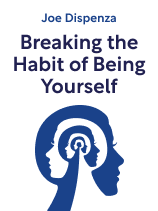

This article is an excerpt from the Shortform book guide to "Breaking the Habit of Being Yourself" by Joe Dispenza. Shortform has the world's best summaries and analyses of books you should be reading.
Like this article? Sign up for a free trial here.
Why is it so hard to change yourself? Why do people become stuck in their ways, and what can you do to break free from your old patterns?
According to Joe Dispenza, the author of Breaking the Habit of Being Yourself, changing yourself is hard because your habitual patterns become hardwired into your brain and body. He highlights two specific habits that make it difficult to change: emotional addiction and inauthenticity.
Here’s why changing yourself is so difficult, according to Dispenza.
Emotional Addiction
Every thought and emotion you have provides a chemical response in your body. Revisiting the same thoughts and emotions again and again hardwires them into our brains, and eventually we become addicted to the chemicals they produce and form a habit. Like an addiction to a substance, the more you feel—or “use”—the emotion, the more desensitized you become to it and the more of it you need to feel normal.
According to Dispenza, attempts at changing yourself cause an imbalance between the brain and body because you’re no longer thinking the way you’re feeling. This causes the body to send distress signals to try to get the brain to return to the thoughts that created the feelings it has become addicted to. This makes it extremely difficult to break the habit of emotional addictions.
(Shortform note: Some health experts suggest that breaking emotional addictions can be even harder than breaking addictions to substances. They argue that substance addictions are actually rooted in emotional addictions, and the process of breaking a habit can feel like the pain a heroin addict experiences when their body is sending out signals that it will literally die without its fix.)
Presenting an Inauthentic Version of Ourselves
According to Dispenza, the habits you consist of also include a gap between who you are and who you present to the world. We’re unwilling to let others see our true emotions, so we hide them out of fear and pretend to be someone else. To make matters worse, we’re also afraid of letting people see the negative mental habits we’ve developed because they make us seem weak or damaged. Therefore, we create an external self to present to the world.
We distract ourselves from our true emotions by staying busy all the time, says Dispenza, and the external emotions from the things we do to stay busy temporarily make us feel like the mask is working. That makes our whole identity completely dependent on our external environment and out of touch with our inner selves, which leads to a feeling of emptiness.
Around our 30s or 40s though, that emptiness becomes hard to ignore, which leads to midlife crises. We seek out new external experiences to feel new emotions, but once those experiences are over we return to the same lives we had before, unchanged and still wearing the mask. Sometimes when these experiences fail to give us the new emotions we’re craving, we seek the emotions through addictions to things like substances, gambling, or shopping.
Attempts to be more authentic will likely be met with resistance because others think of you in a certain way and don’t want you to change. We often form relationships around the emotions that comprise our masks. We bond with others over the emotions we share from similar experiences, so when one person starts shedding those emotions and embracing their true self, others in the relationship see a change in that person and think it needs to be fixed through medication or other interventions.

———End of Preview———
Like what you just read? Read the rest of the world's best book summary and analysis of Joe Dispenza's "Breaking the Habit of Being Yourself" at Shortform.
Here's what you'll find in our full Breaking the Habit of Being Yourself summary:
- How your habits are keeping you from growing
- How to unlearn your harmful habits to create a new you
- A four-step meditative practice to help you learn new habits






